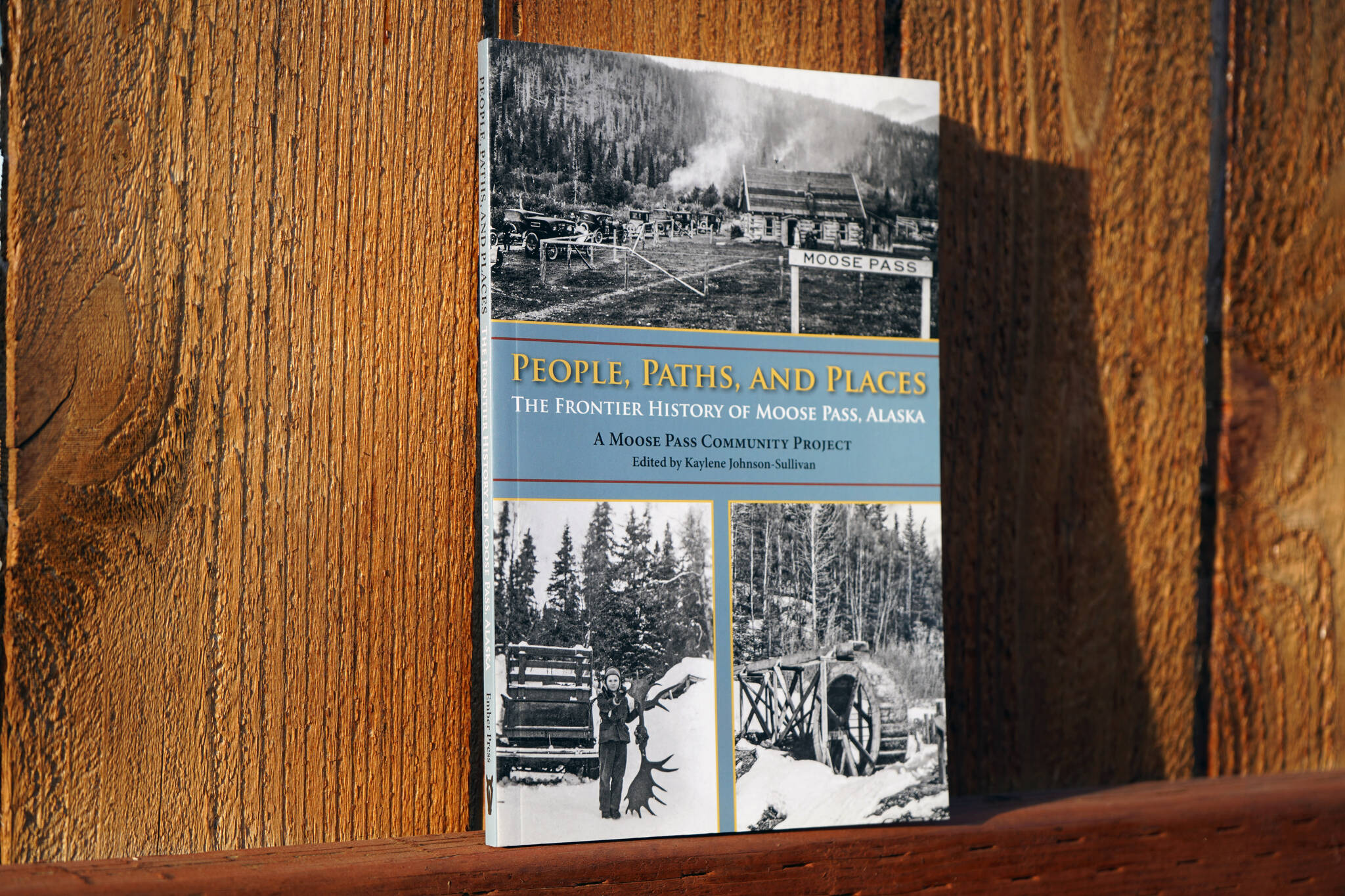The community of Moose Pass was named among the winners of the Contributions to Literacy in Alaska Awards by the Alaska Center for the Book on Sept. 10.
The entire town is named a recipient because members of the community collaborated to produce a historical account of their town published in 2021 — titled “People, Paths, and Places: The Frontier History of Moose Pass, Alaska.” According to a release by the center, the book “includes contributions from local school children, longtime residents, and historic collections.”
Moose Pass was selected as a recipient, the release says, because the project served to preserve local history and also created “community pride and friendships that should inspire other Alaskans.”
Awards will be distributed on Sunday, kicking off Alaska Book Week. Also receiving an award is Erin Coughlin Hollowell of Homer, for “years supporting the work of poets and writers in Alaska.”
During last year’s Alaska Book Week, people involved with curating content for “People, Paths, and Places” spoke about the process in a panel moderated by University of Alaska Anchorage English Professor Jennifer Stone.
The work began, they said, when Willow Hetrick — a nearly lifelong Moose Pass resident — saw a display of historical photo panels in Portage. She wanted to do the same thing in Moose Pass, at a library being expanded into a space that formerly housed a volunteer fire department.
Those panels, which described “People” “Paths” and “Places” had been funded by a grant from the Kenai Mountains-Turnagain Arm National Heritage Area, she said. Because those were “beautiful,” and to create a sense of consistency across communities in the region, she pursued the same project in her hometown.
Hetrick said that to assemble the panels, she worked with the heritage area and with Nanette Stevenson, an art director. They collected photos and stories, and also obtained archives from the Moose Pass Miner, a newspaper that operated in the area from 1939 into the ‘40s.
Kaylene Johnson-Sullivan, a publisher for Ember Press, who published “People, Paths, and Places,” but also formerly executive director for the heritage area, worked with Hetrick and others to see the panels installed in Moose Pass. But then, she said, people “wanted to take it home with them.”
Johnson-Sullivan said that people were interested in the stories of the people in the photos — and that they had assembled an abundance of material that had gone unused because of space.
Rodger Painter, a historian born in Seward, said that the newspaper archives drove the development forward — he said by the project’s conclusion, Hetrick had collected a full archive of every edition of the publication.
As they began expanding the project into a book, Hetrick said she found people, paths and places she had heard of. She said she pursued those and asked others who should be involved. The group gave generated lists to Moose Pass Elementary School, and a teacher there integrated it into her curriculum. Kids dug into their own history and filled in gaps.
Dr. Rolfe Buzzell, another historian, helped to curate and verify the stories turned up by the students, and Johnson-Sullivan edited the work.
“This really was a community project,” Johnson-Sullivan said.
She said they were quickly able to turn up lots of parts and pieces —the real process was making everything seamless.
Hetrick said the kids decided who would be included and what to write about. She said they tried to include the things that everyone is familiar with. She described the text as centered on a certain window of time. It’s not about her elders, but the stories that her elders remember — the stories that are going away with that generation.
“My elders right now remember these people, and they are passing away,” Hetrick said. “Since we’ve written this book, two people that I’ve interviewed have passed.”
Hetrick said they “have big dreams” of a second publication about that next generation.
Stevenson said they tried to give opportunity to anyone in Moose Pass to help, to contribute and to review the text. She said they wanted to make sure no one had qualms with depictions or accounts of people or events.
Some tricky elements required “sleuthing,” Johnson-Sullivan said.
Those involved said that the book was important for Moose Pass — not just to preserve its history, but also to build its image.
Moose Pass, Painter said, is somewhere that people drive through.
“We’d like to get people to stop.”
For more information about “People, Paths, and Places: The Frontier History of Moose Pass, Alaska,” visit emberpressbooks.com. For more information about the Alaska Center for the Book, visit alaskacenterforthebook.org.
Reach reporter Jake Dye at jacob.dye@peninsulaclarion.com.

